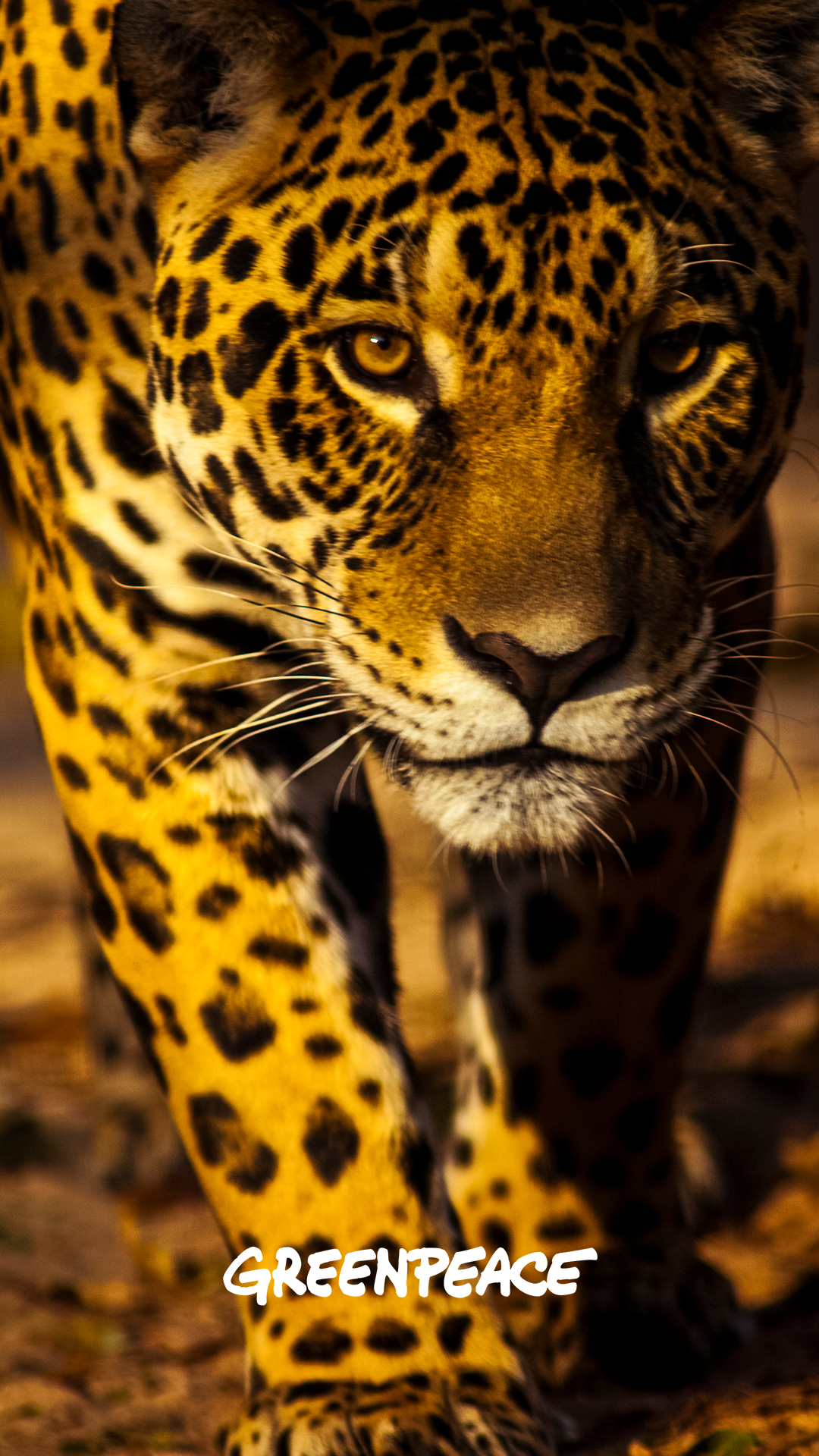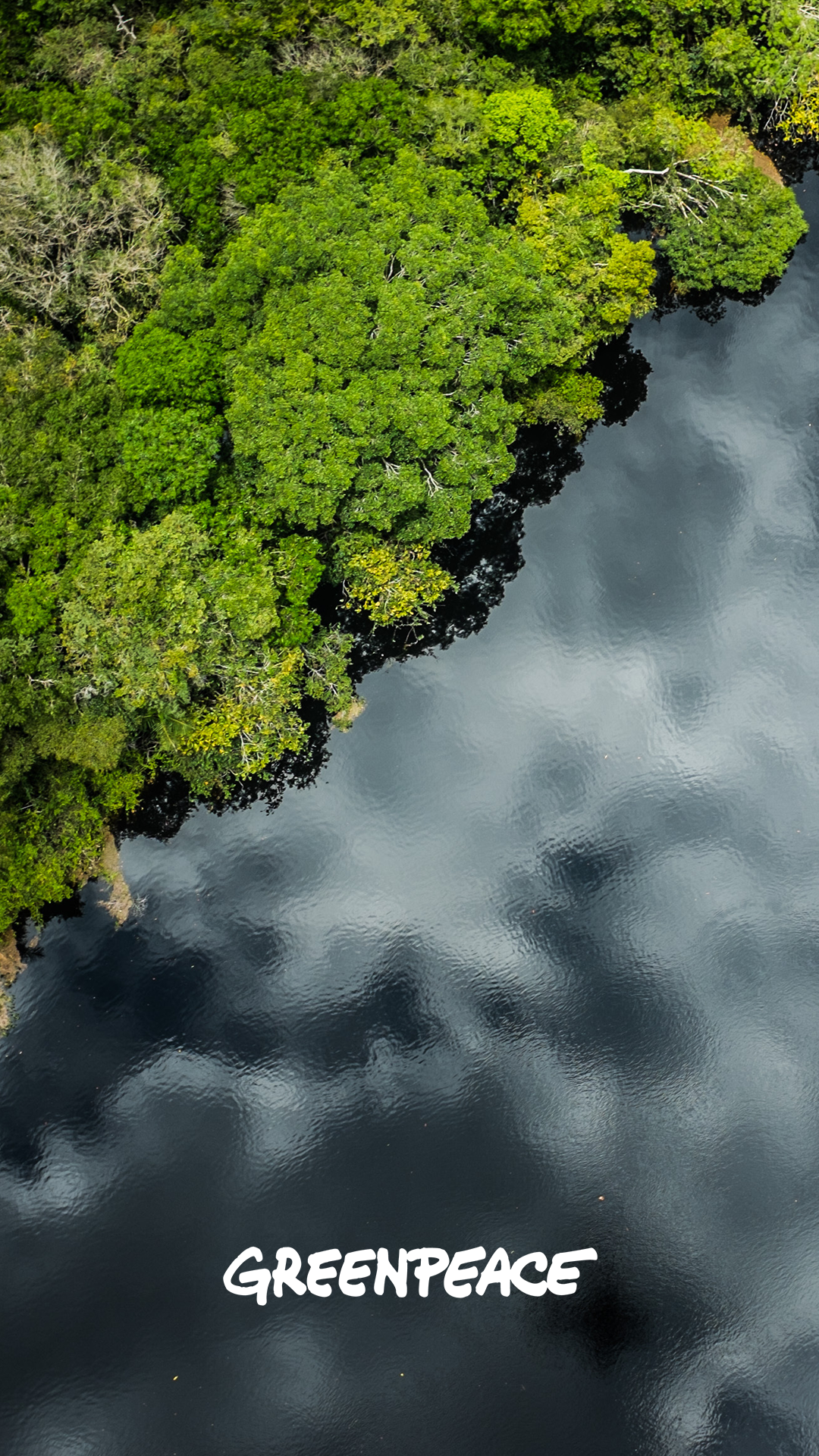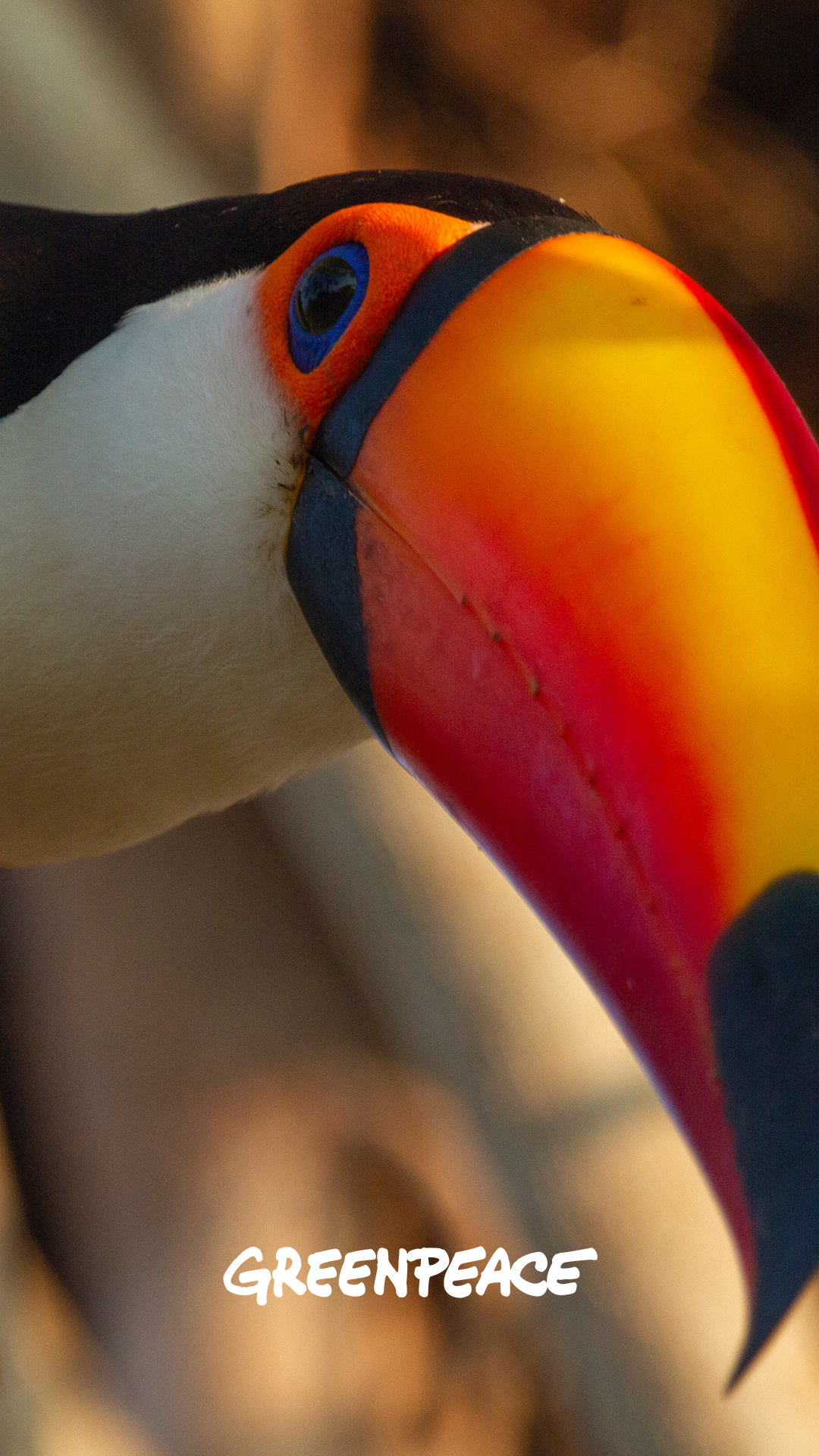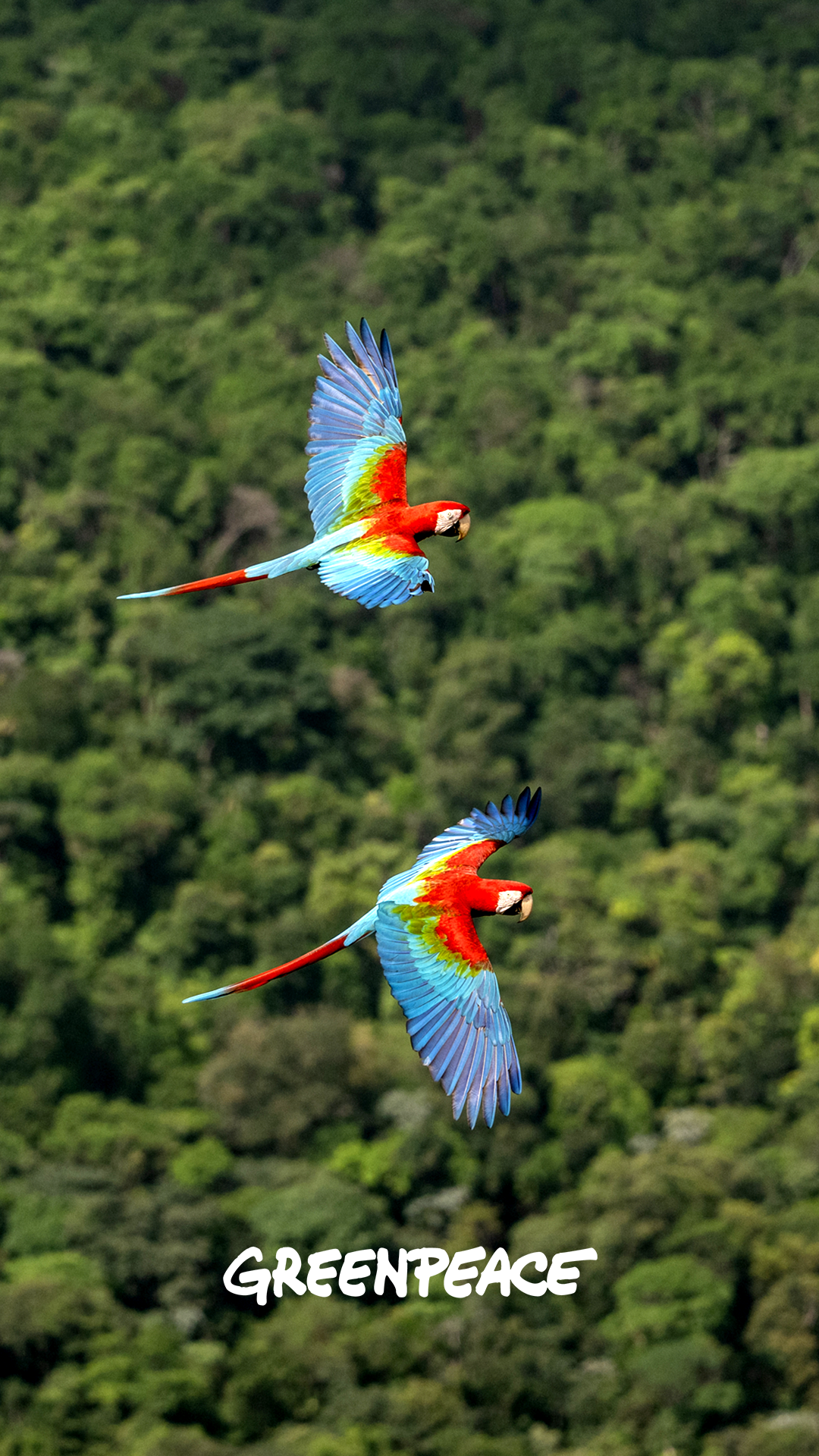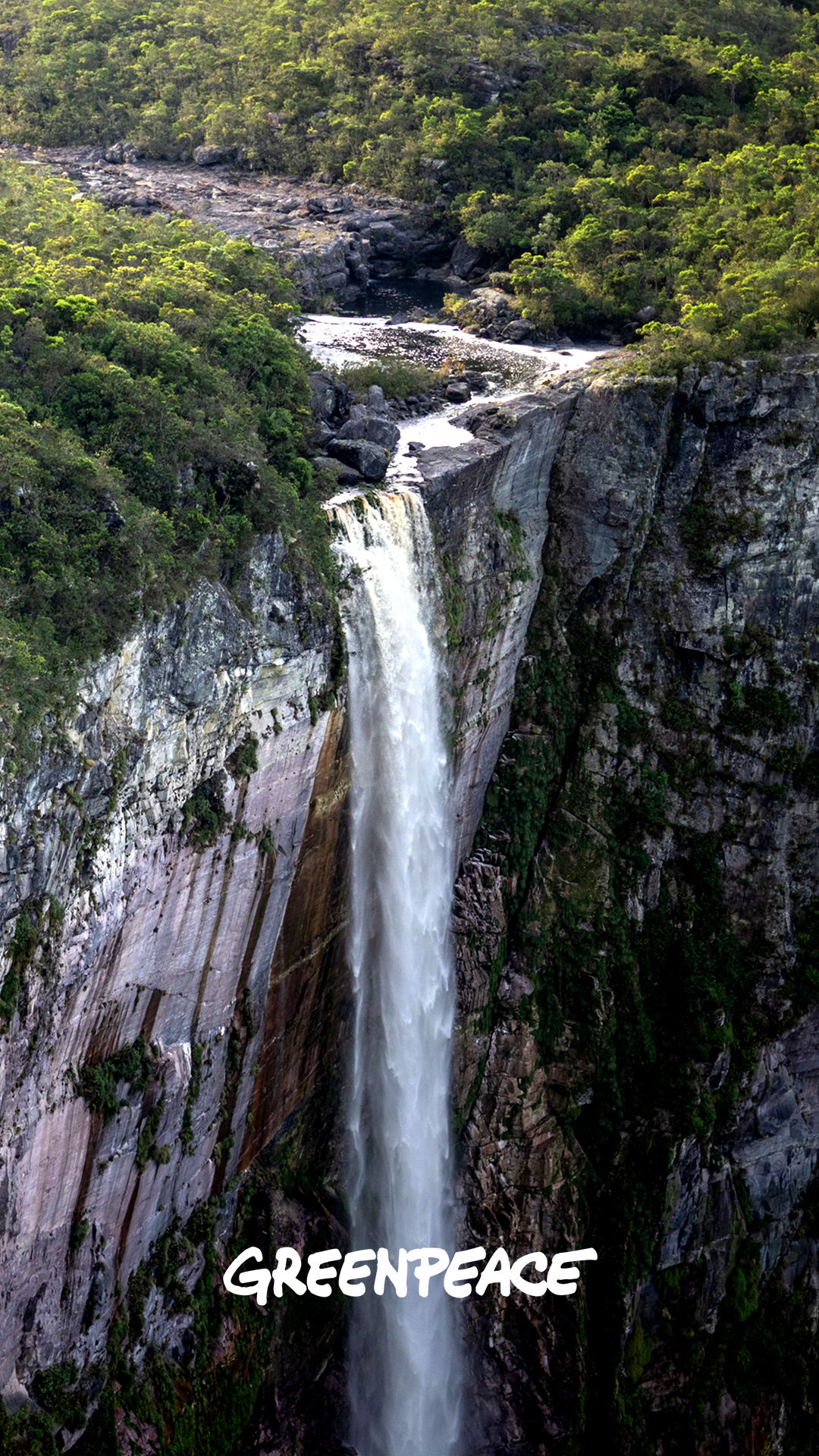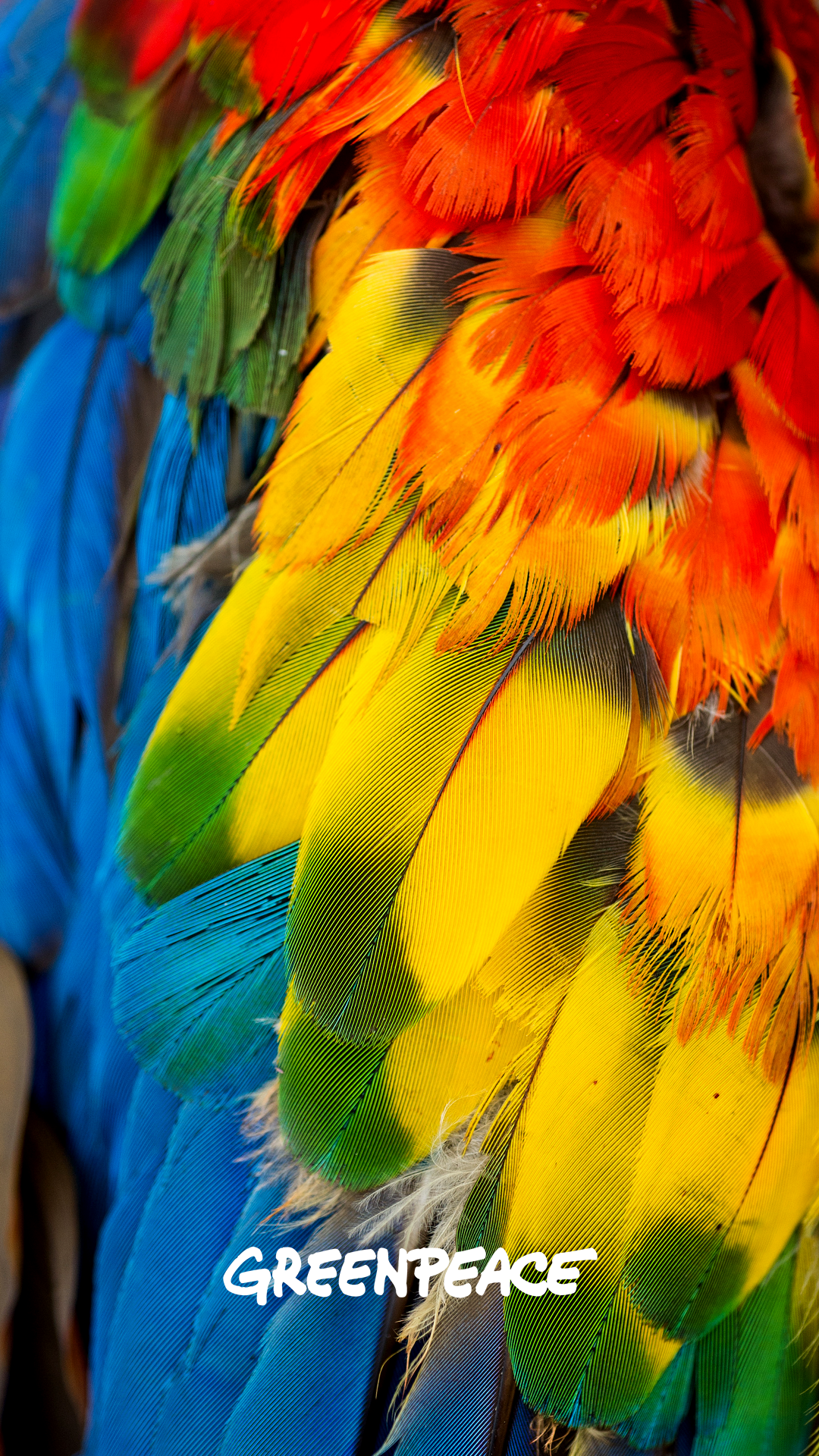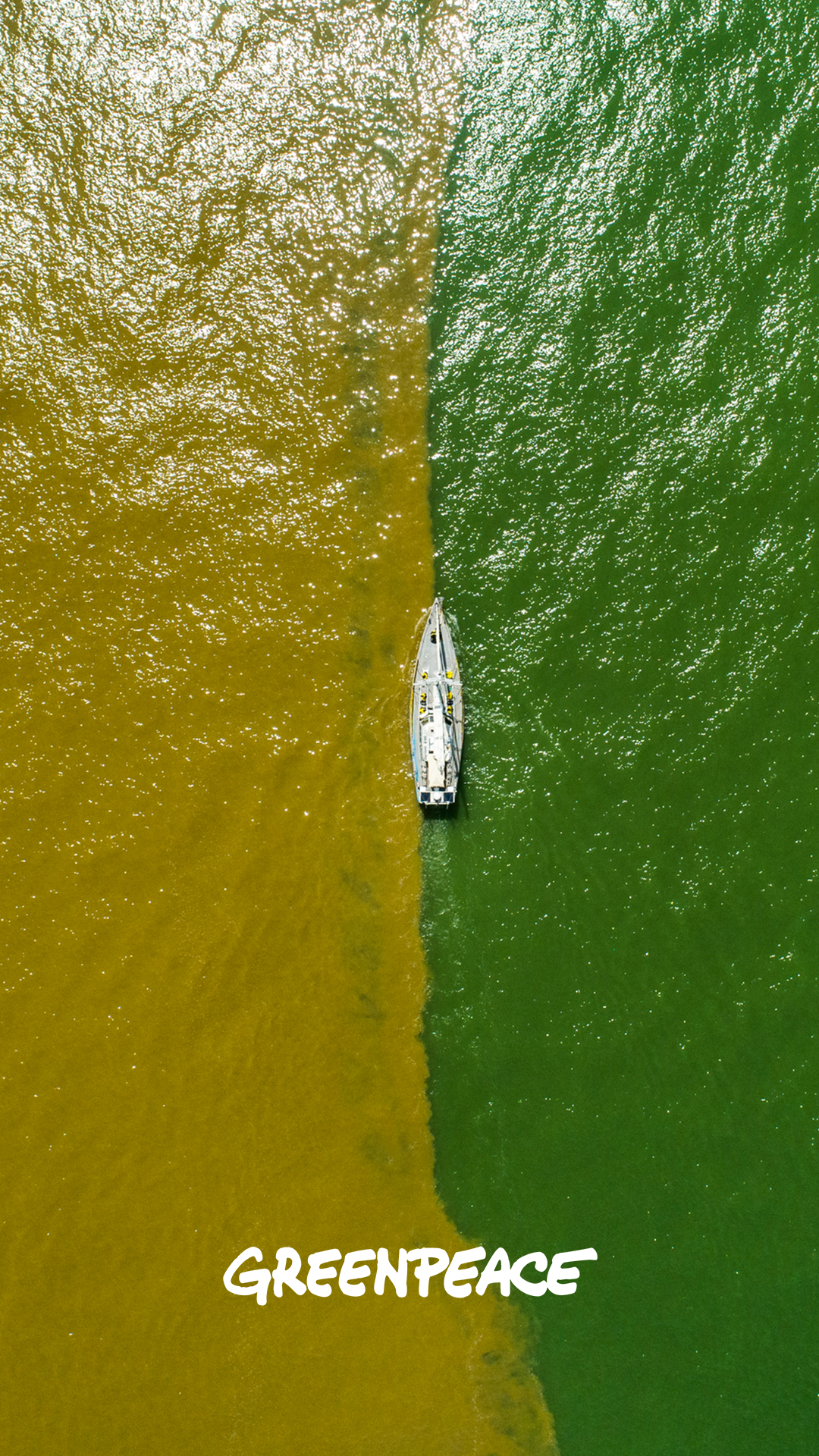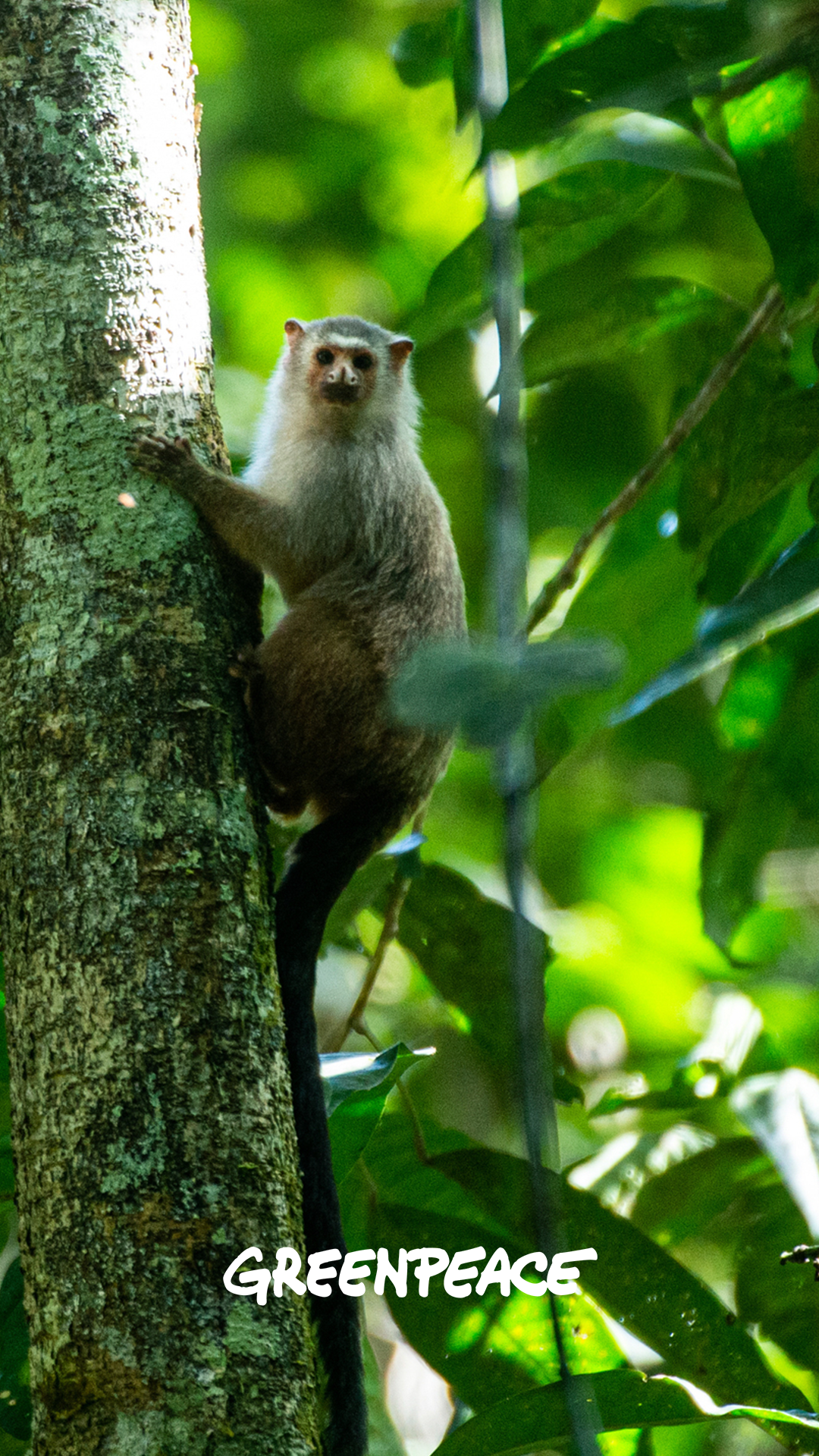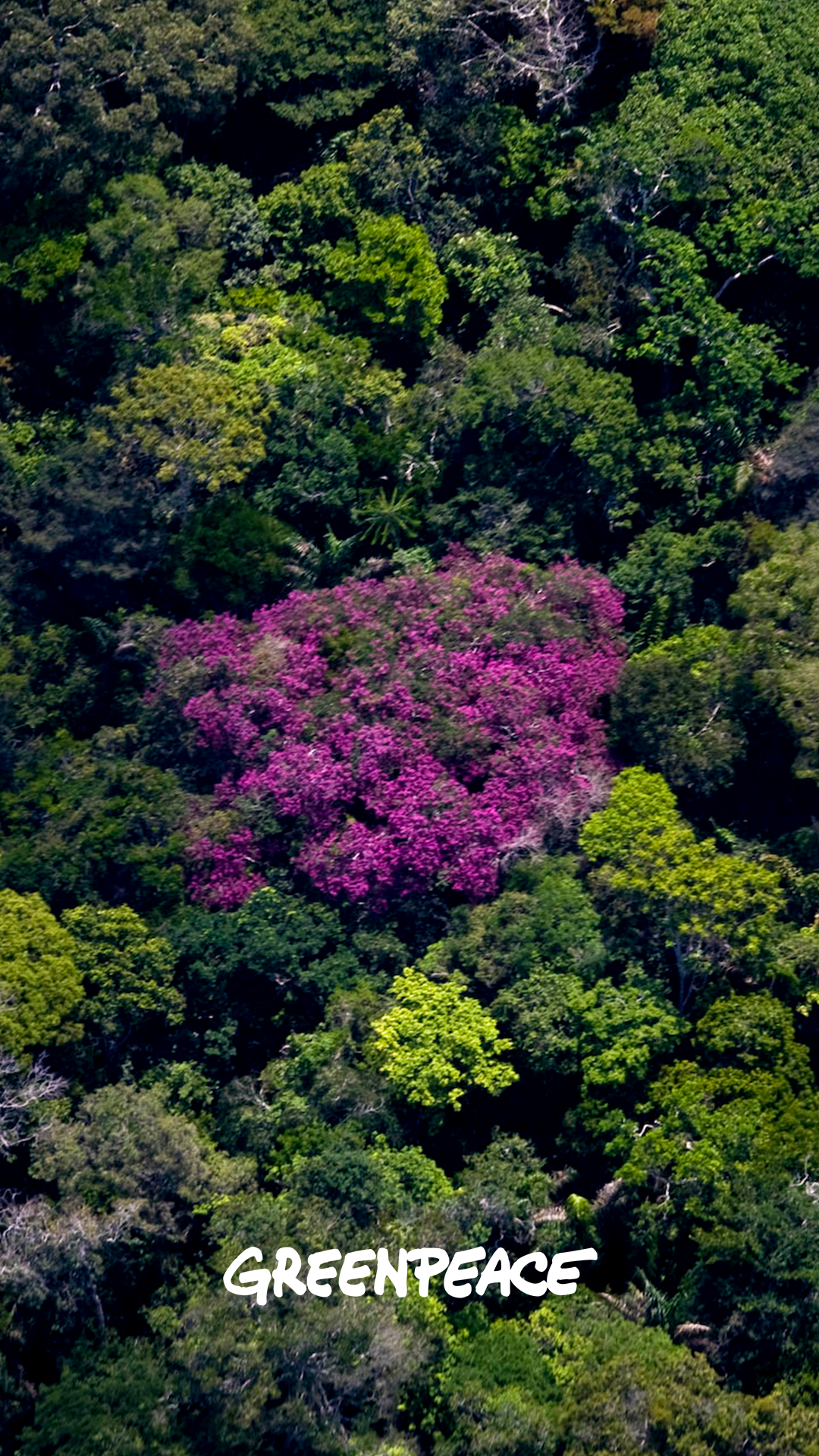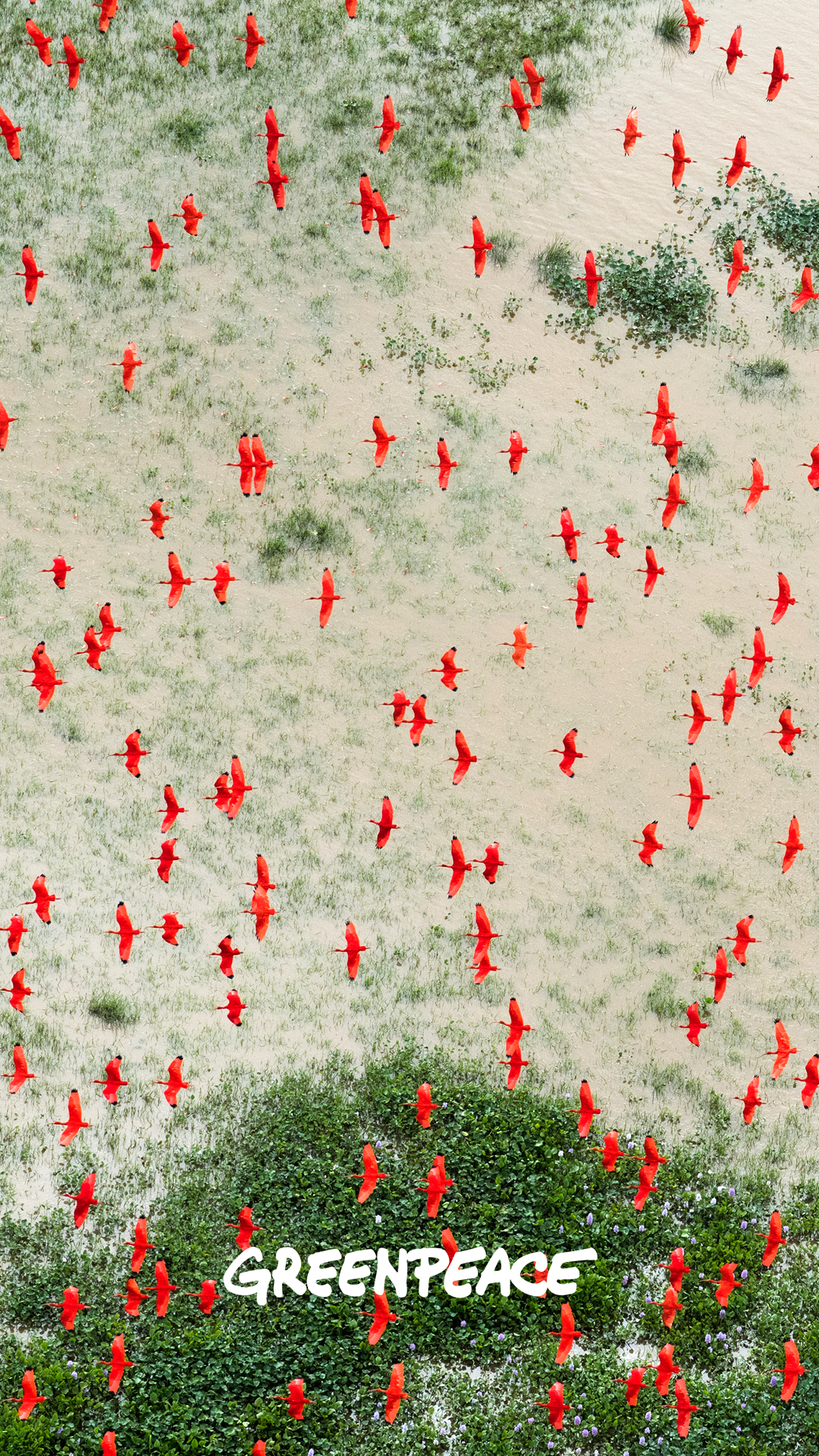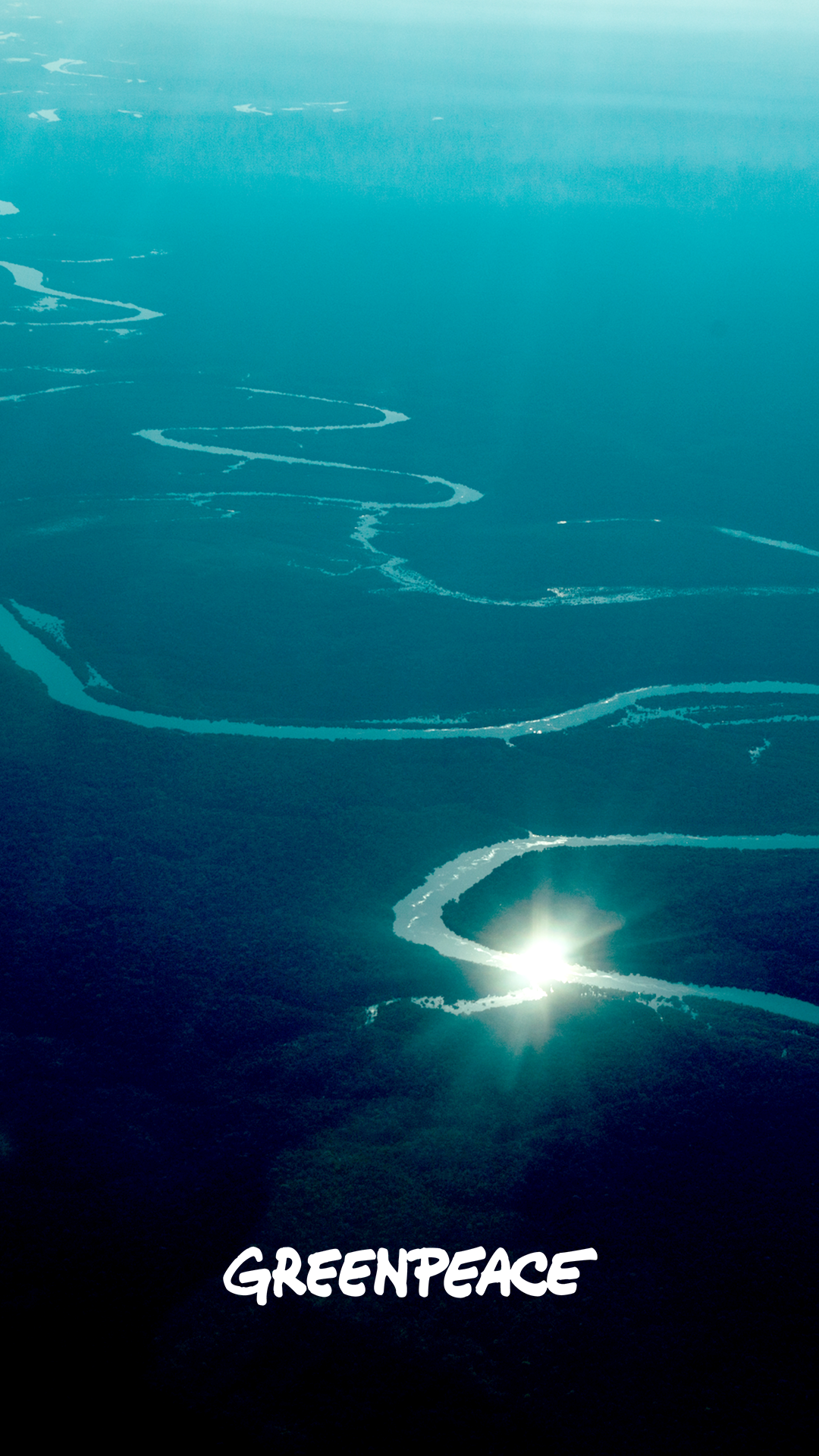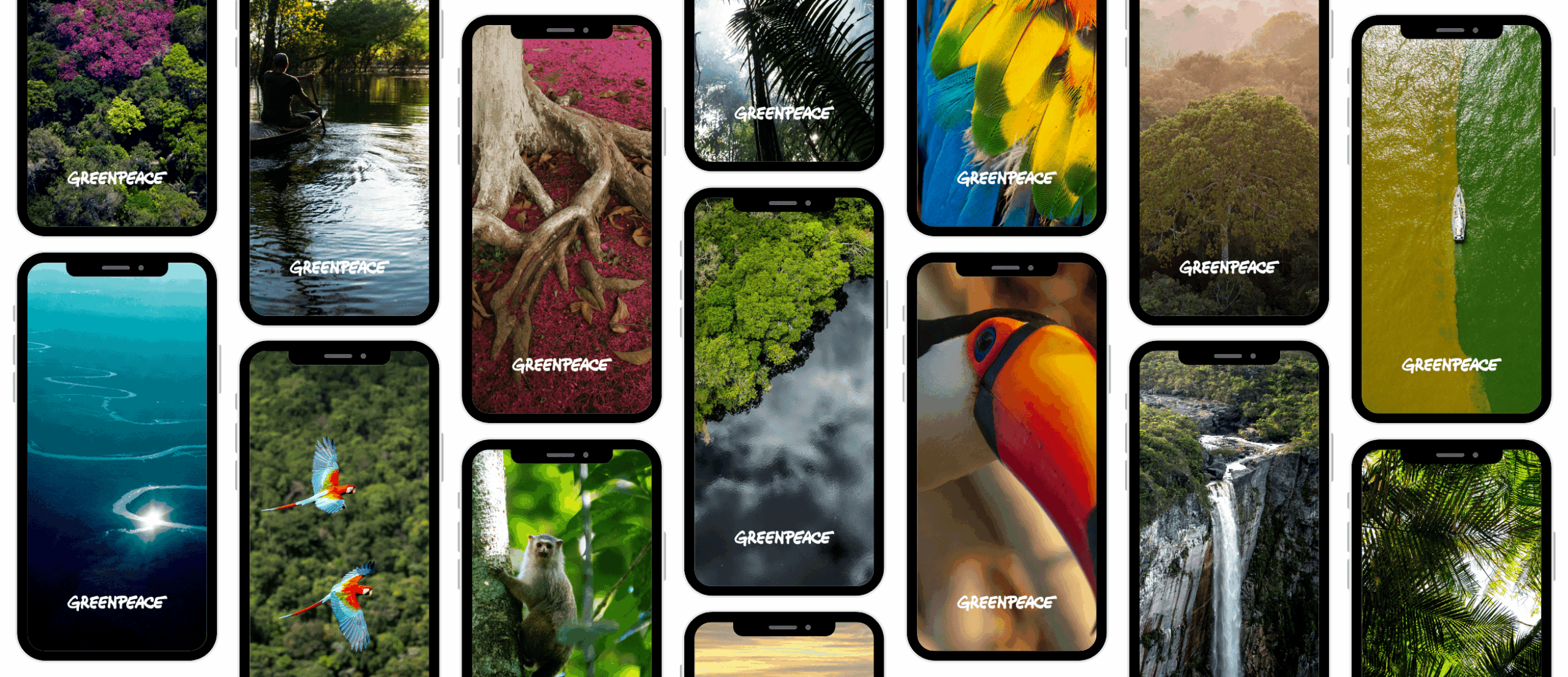
As a valued Greenpeace supporter, we’re giving you some free phone wallpapers to help bring a touch of nature to your everyday life.
How to set up your wallpaper (Android phones)
Choose your favourite wallpaper from the options below. Then:
- Tap it to open the full size version.
- Press and hold on the image.
- Choose ‘Download image’ or ‘Save image’ (wording may vary).
- Open your Gallery or Photos app.
- Tap the three dots menu or ‘Set as wallpaper’ option (usually in sharing or menu actions).
- Choose whether to set it as your home screen, lock screen, or both (it’ll look best on your lock screen).
How to set up your wallpaper (iPhone)
Choose a wallpaper from the options below. Then:
- Tap it to open the full size version.
- Press and hold on the image.
- Choose ‘Save to Photos’ (wording may vary).
- Open your Photos app and find your image.
- Tap Share (the square with an arrow).
- Scroll down and select ‘Use as Wallpaper’.
- You’ll see a preview of your wallpaper. Pinch to zoom out if needed, then tap ‘Add’ and choose ‘Set as Wallpaper Pair‘.

It looks like you’re on a desktop computer. To get your wallpaper, scan the QR code to open this page on your phone, then follow the instructions that appear.
Choose your wallpaper
Face to face
Jaguars are the Amazon’s apex predator – stealthy, powerful, and built for ambush. Unlike most big cats, they love water and are expert swimmers, often hunting fish, caiman, and even anacondas. Their jaws are incredibly strong – powerful enough to bite through a turtle’s shell with ease.
Forest, river and sky
Where dense forest meets the river, the water becomes a mirror—rippling gently with the reflection of a shifting sky. Clouds drift across its surface while branches lean in from the banks, blurring the line between earth and air.
Fits the bill
Toucans might look like a cartoon come to life, with their oversized rainbow bills and comical hops – but there’s clever design behind the dazzle. That huge beak isn’t just for show: it helps them reach fruit on narrow branches, regulate their body temperature, and even scare off predators. And despite its size, it’s so light they can sleep with it tucked under their wing.
Go far, go together
Scarlet macaws are the world’s largest parrot, making them easy to spot as they soar over the rainforest canopy. But these beautiful birds are tougher than you might think – their strong beaks can crack the hardest nuts, and they can digest fruits that are fatally toxic to other animals.
El Dorado falls
El Dorado Waterfall, also known as the Aracá Waterfall, is nestled deep in Brazil’s Amazon, in the Serra do Aracá State Park near Barcelos. Towering an impressive 353 m, it’s one of the highest waterfalls in Brazil
Show your colours
A macaw’s feathers may look like a tropical fashion statement, but their bold colours are surprisingly good camouflage. In the patchy light of the rainforest canopy, bright reds, blues and yellows help break up their outline among leaves and shadows – making them harder for predators to spot.
Where the waters meet
Where the Amazon River meets the Atlantic Ocean, two worlds collide. The river’s murky, sediment-rich waters run side by side with the deep green sea, refusing to mix for miles. Their different speeds, temperatures and salt levels keep them apart in one of nature’s most striking dividing lines.
Watchful climber
The Manicoré marmoset is a perfect example of how much of the Amazon is still a mystery. First described as a new species in 2000, it was later found to be genetically identical to Marca’s marmoset, discovered in 1993 – leading scientists to merge the two under a single name: Mico marcai .
Bold blossom
Amid the endless green of the Amazon canopy, a single tree explodes in purple blossom – bold, brief, and impossible to ignore. These bursts of colour often mark the change of seasons, drawing in pollinators from far and wide.
Flock of colour
A flock of scarlet ibis is a breathtaking sight – hundreds of bright red birds sweeping across the sky like a living sunset. Their vivid colour comes from the crustaceans they eat, rich in carotenoids that tint their feathers over time
A glimmer of hope
The Manicoré River winds like a silver thread through the southern Amazon, carving its way through remote forest and flooded plains. From the air, its gentle curves seem peaceful, but these waters are teeming with life.
